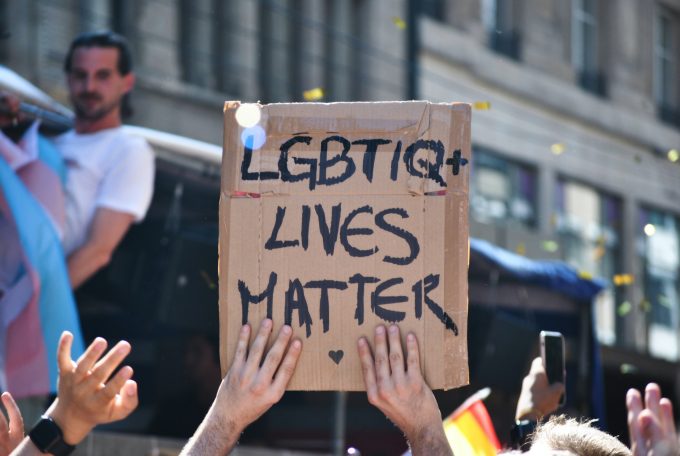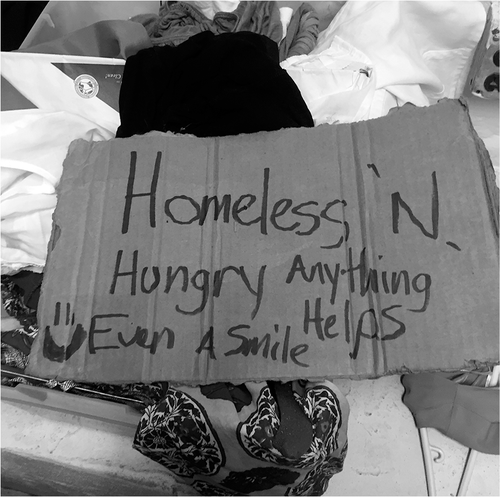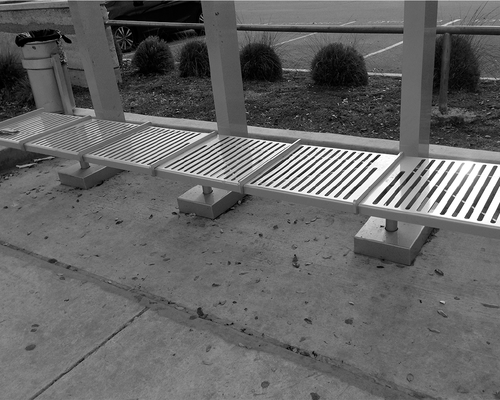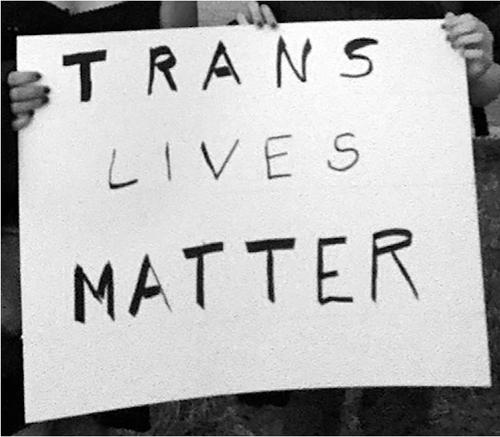Queer Street Smarts

Street smarts. A term people use to describe the cultural knowledge that marginalized people, often poor Black and Brown youth, have to learn in navigating their lives. This knowledge—and the skills people gain from it—helps Black and Brown people face obstacles in their paths, while dealing with the violence of marginalization. Street smarts is figuring out how to get by with limited resources in a white supremacist society.
Street smarts, though, also involve forms of knowledge about how gender and sexuality shape the streets. That is, based on my study on lesbian, gay, bisexual, transgender, and queer (LGBTQ) youth experiencing homeless-ness, I learned that street smarts is not only about gaining a certain class-based and race-based knowledge of the streets but also about gaining knowledge about how gender and sexuality shape the public sphere and finding strategies to navigate the heteronormative public landscape. I call this knowledge queer street smarts.
In telling me about her experiences of gaining queer street smarts in navigating public bathrooms, Zoe, who self-identified as a 19-year-old Hispanic transgender woman experiencing homelessness, explained, “I’d have to shower in the men’s [shelter bathroom]. And I was afraid I was going to get raped. And [some men experiencing homelessness] would tell me that I don’t belong in there ‘cause I’m a girl. And I’m like, I have to be clean. I can’t let these fucking men run me out of this fuckin’ shower.” In the end, however, Zoe avoided communal showers, and she cleaned herself in sinks. “I don’t smell rough like most people do due to the streets. I’d find a way to keep clean. I’d sneak into restrooms and do a quick rinse, so they don’t know nothing. It’s just like I’m in and out.”
LGBTQ youth experiencing homelessness develop queer street smarts to find a shower or another way to get clean. They also develop queer street smarts to find a safe place to sleep and to avoid the gender- and sexuality-based violence of the streets. Indeed, the streets, shelters, and services for people experiencing homelessness uphold heteronormativity and the gender binary. This heteronormativity creates barriers for mainly poor Black and Brown LGBTQ youth navigating public life. The youth learn queer street smarts to respond to and deal with these barriers.

Shelters and Sleep
Dante, a 22-year-old bisexual Black youth, detailed his experience at the courtyard—a place where many people experiencing homelessness in San Antonio sleep at night and access services. “First day I was in [the courtyard], I got picked on for hanging out with Justice [an 18-year-old Black heterosexual transgender woman],” he stated. “I beat somebody up. I beat them bad because they pissed on my shoes. They peed on my shoes because I was hanging out with Justice.” Justice herself described to me how the courtyard’s policies and practices around gender segregation affected her. “They said I couldn’t shower with the women,” she detailed. “I couldn’t sleep with the women because I wasn’t a woman. I had an [officer at the courtyard] tell me I was not a woman. That was kind of hard for me.”


Violence and the Streets
Adelpha, an 18-year-old heterosexual Black, Mexican, and white transgender woman, discussed street harassment and the violence of the streets. She stated, “Guys just think trans—if you’re walking around trans, you’re like a prostitute. We could literally be walking down the street, and we’re labeled already. […] They’re gonna either treat you like a prostitute, want to fuck you, or treat you like shit or whatever. I mean we’re getting like raped, killed, all this stuff.” Naomi, an 18-year-old bisexual transgender Latina, also said, “It’s so scary for us, ‘cause we don’t know what the fuck is going to happen to us. We turn a corner. We don’t know how these people are going to react. We don’t know if we are gonna be raped, killed, beaten. We don’t know. We have to live with that uncertainty every freakin’ day.”
People hypersexualize transgender women of color and gender-expansive youth of color. This dehumanizing process exposes certain youth to physical and sexual violence. According to the National Center for Transgender Equality’s 2015 U.S. Transgender Survey, almost half of transgender people have been sexually assaulted; these rates are higher for trans-gender people of color and for transgender people experiencing homelessness.
Through these harrowing experiences, youth have developed queer street smarts for navigating the public sphere and the harassment and violence that come from living on the streets. Youth stayed on guard, sometimes carried a weapon, changed their voice or appearance, or engaged in other strategies to try to avoid sexual and gender-based violence. Often youth used drugs to relieve stress, but this could make them more vulnerable. Likewise, if caught with a weapon, youth could be barred from accessing services. These strategies, however, are what youth had to rely on to deal with the harassment and violence that comes with living on the streets.
Bathrooms and Getting Clean
Like Zoe, LGBTQ youth experiencing homelessness struggle with accessing restrooms because they fear harassment and discrimination in these public facilities. Jasper, a 23-year-old mixed-race homosexual, talked with me about the harassment he experienced in the bathroom at his court-ordered recovery program. “I’d go to use the restroom at the same time as someone else. And they’d be like, ‘Oh, hell no.’ And like walk away.” Jessie, an 18-year-old white, gay, gender-fluid youth, commented on his fears of using the showers at the courtyard in San Antonio. “I didn’t look anyone in their eyes,” he exclaimed. “I just went in there and showered and got the fuck out. Plus, I was scared they were going to rape me.” Kareem, a 21-year-old Black gay youth, also discussed the courtyard showers. He stated, “People looked at [me and my boyfriend] funny. I hated it there. Because the showers—like ugh, ew! I’m not about to shower where anybody can see me. So, we was dirty for a couple days.”
As many businesses only allow customers to use their restrooms, youth experiencing homelessness struggle to find a restroom to relieve themselves. They also find it difficult to locate a place to shower. Instead, the youth in this study learned strategies to navigate the violence and harassment they encountered in gender-segregated public bathrooms. Youth used their queer street smarts to look for family and handicap-accessible restrooms that felt safer and more private. Or they did quick rinses in restrooms to avoid using the showers at shelters. Other youth chose not to shower or showered quickly in order to escape the bathroom surveillance. Not cleaning properly, of course, could lead to health concerns and make it difficult to get dates or look presentable in court or for a job interview. Thus, some strategies still left the youth vulnerable and marginalized in navigating other parts of their lives.


Queering Street Smarts
The concept of queer street smarts is a call to help us reimagine the concept of street smarts. Street smarts entail not only knowledge that poor people must gain to navigate capitalism and getting by on limited resources nor only knowledge Black and Brown people gain to navigate racism and the white supremacist urban landscape. But these processes of class and race intersect with gender and sexuality to shape the cultural knowledge and strategies that certain youth must learn to navigate the white heteronormative public sphere.
That is, queer street smarts entail understanding how gender and sexuality, along with race and class, shape experiences on the streets and other public spaces and how to avoid unwanted discriminatory interactions. The youth needed a class-based knowledge of finding safe public places to shower and sleep that other LGBTQ people, who have more access to private spaces, do not need to gain. Likewise, Black and Brown LGBTQ youth had to learn how to navigate racial discrimination and people violently targeting them on the streets and in public bathrooms. The youth also faced unintended consequences in implementing their queer street smarts such as not getting the services they needed, experiencing isolation, and facing more violence. These heteronormative processes make experiencing homelessness for LGBTQ youth often more brutal and getting off the streets even more difficult. Therefore, we need to take gender and sexuality seriously—as they intersect with race and class-in our understanding of how people navigate and experience urban life today.

Comments 4
jetboxapk
June 13, 2021Wow! such a great article and wonderful piece of writing...This is the way of knowledge—and the skills people gain from it—helps Black and Brown people face obstacles in their paths, while dealing with the violence of marginalization. Everything is possible from this
Best Regards
jetboxapk
June 13, 2021Excellent post and something bliss to read this.. it has one point Their queer street smarts taught them that the streets may provide for them more safety than shelters and other service providing spaces. We have to solve any problem with Non violence's but some its happened...
jetboxapk
June 13, 2021wow! great post. Now Builds on the new Jim Crow to show that policing is not only about race and class about also about gender and sexuality, especially policing poor Black and Brown LGBTQ people's expansive expressions of gender and sexuality. "The new Lavender Scare" captures this process. This is the way of perfectness..
fall guys
June 28, 2021I appreciate the effort you took to write it. Please make more posts like this I will continue to support you.